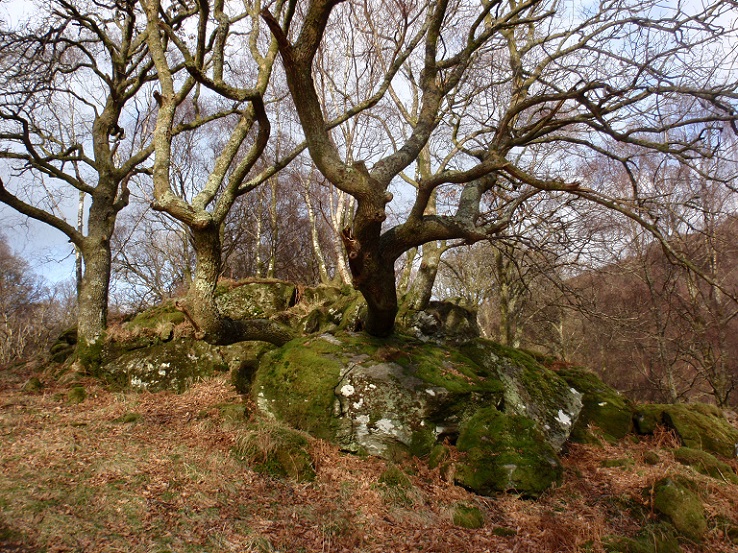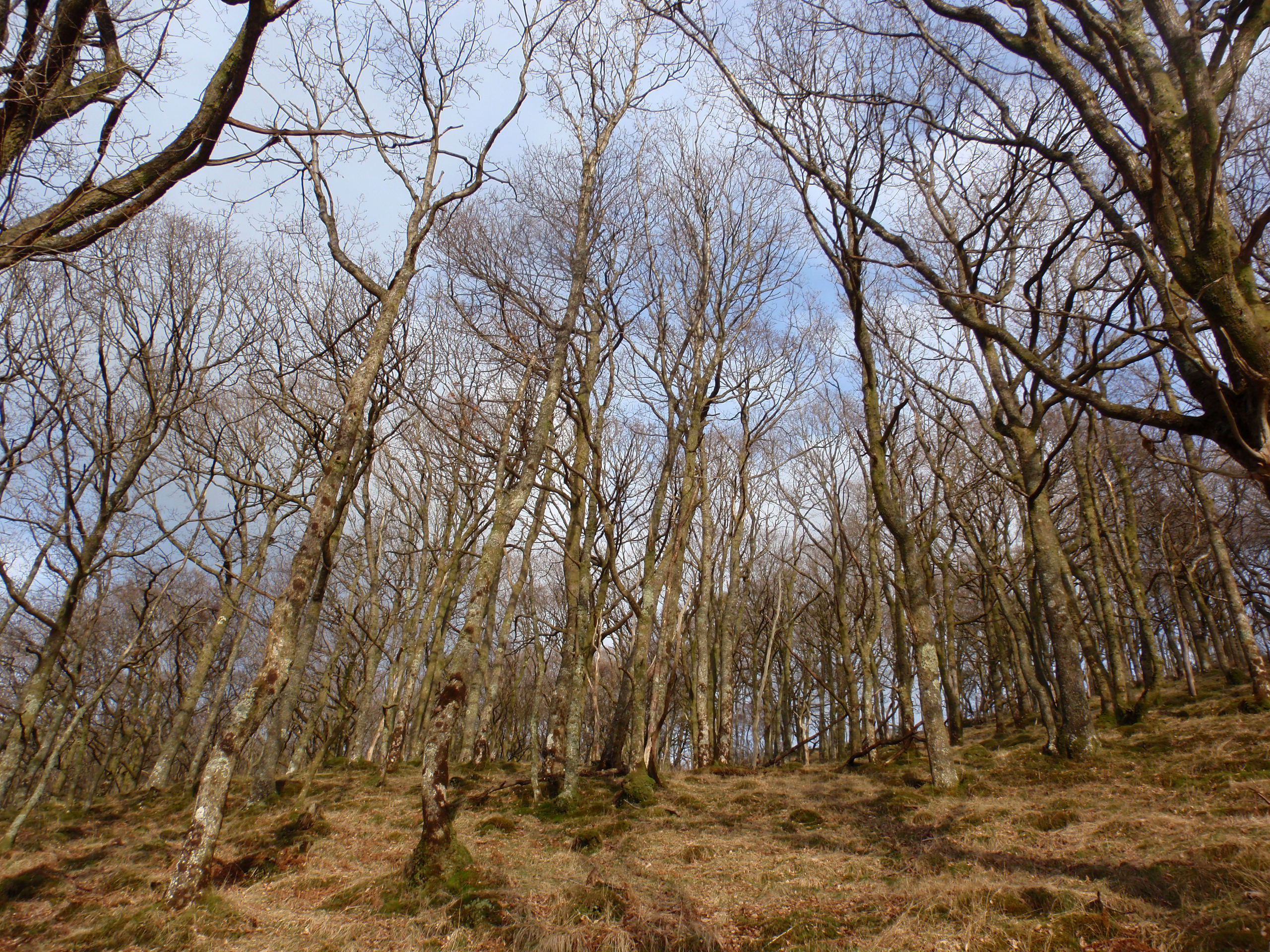
There is an interesting article in the December edition of Scottish Birds, the quarterly magazine of the Scottish ornithologists club, about nuthatch colonisation on the Glenfalloch Estate at the head of Loch Lomond. The authors, who work for Alba Ecology Ltd, have been undertaking annual breeding bird surveys of the area since 2015. They report that up until 2017 they had recorded no nuthatch on the estate but that year recorded four pairs and by 2021 numbers had increased to seventeen pairs.
Good news and the authors are to be commended for publishing it. But what are the implications, both for how we use ecological data and for wildlife?
Ecological monitoring and wasted data
The authors report the work was funded through the Scottish Government Rural Payments programme. Under this scheme landowners can qualify for a Basic Payment (see here) if they can prove minimum stocking levels – i.e show the land is farmed – or, alternatively, by carrying out an annual Environmental Assessment consisting of “three elements:
- a map and description of the farm environment
- a breeding bird, mammal, butterfly survey
- monitoring of habitats including plant health survey”.
Hence this survey.
The findings of these surveys should potentially provide both our public authorities and the general public with a large and valuable source of information to inform our responses to the climate and nature emergencies. However, at present very little information from them appears to enter the public realm.
The Glenfalloch Estate surveys are a case in point, covering all breeding birds. So, while Alba Ecology report nuthutch is spreading through the oak woods around the head of Loch Lomond, what is happening to the wood warblers whose amazing trilling song I have heard there in Spring? What about the sparrowhawks, the main avian predator of nuthatch? Or the whinchat: the head of Loch Lomond was one of best places to see them in Scotland – what is happening to them?
If the survey data for all breeding bird species was made publicly available, it might be possible to draw some evidence based conclusions about the health of the “farmed” habitats on the Glenfalloch Estate and the implications for their future management. The problem with the current system is that ecologists undertake surveys for clients and those clients then generally own the information, whether this has been directly funded by the public, as through Rural Payments scheme, or not.
Sometimes survey information commissioned by landowners and developers may become public for a time, for example when it is published as part of a planning application (although usually this is then removed from the public realm when the application is decided). There appears to be no system, however, to ensure that survey information is uploaded onto publicly accessible data bases like birdtrack or that the ecologists undertaking the surveys consider the wider implications, as Alba Ecology to their credit has done in this case.
Alba Ecology hint at the limitations of the current system on their website (see here) where they state that each year they set aside a proportion of their funds for non-commercial research – good for them! I might be wrong – I have not seen their contract – but I would hazard a guest that they had to ask Glenfalloch Estates before they could make the information they had collected about the nuthatch public and the work was done in their own time.
How best to make such survey information public is quite complex but at present there appears to be little being done to improve the situation. Our National Parks should be in an ideal position to take a lead on this particularly as they may be handed responsibility for disbursing rural payments under the Scottish Government’s proposals to create Regional Land Use Partnerships.
The Loch Lomond and Trossachs National Park Authority now has a web page where it publishes research (see here), but this contains precious little on wildlife and certainly doesn’t include any of the surveys funded by the Rural Payments scheme. There is no mention of the spread of nuthatch, or its implications, in the LLTNPA’s Scottish biodiversity duty report 2018-20 (see here). Indeed there is almost no information in that report which would enable one to tell how any species in the National Park our doing at all.
There is no excuse for that but one wonders if anyone in the LLTNPA has clocked what is happening with species like nuthatch or whether they have any idea how many estates/landowners have been funded to undertake such surveys in the National Park? In October 2020 the Chartered Institute of Ecology and Environmental Management (CIEEM) held a conference on land-use after which their patron, a former Chief Executive of SNH (now NatureScot), reported (see here) that:
“A recurrent theme was the importance of gathering the appropriate data”.
Sadly, I cannot see anything on the CIEEM website which suggests that their members, the people who collect all the data, are campaigning to ensure that it is made public. The Environmental Information Regulations are not for purpose, applying only to public authorities, and need to be extended to apply to landowners and developers.
The significance of the nuthatch colonisation of Glen Falloch
Nuthatch expanded into southern Scotland very rapidly in the 1990s and, as the report in Scottish Birds states, they are now rapidly moving further north. What was once commonly depicted as a sedentary bird – despite irruptions on the continent – appears not so sedentary after all.
This move northwards in the British Isles is sometimes attributed to global warming. That may be partly the case – this warm winter is likely to reduce nuthatch mortality around the head of Loch Lomond – but in Siberia the Eurasian nuthatch is found up to 69° north. Perhaps the genetic variations between the western and eastern populations of the Eurasian nuthatch enable those in Siberia o survive snow and the cold better?
But the colonisation also says something about habitat. Nuthatch prefer oak and, as the formerly coppiced/managed oak around the north of Loch Lomond has matured, so the range and quantities of invertebrates on which the nuthatch primarily feed has expanded. And with mature trees come nesting holes (the article states there are no nesting boxes on Glenfalloch unlike the oak woods further south). This is a natural success story. It needs, however, to be placed in context:

While nuthatch will feed on the ground, they mainly feed on tree trunks and are less reliant on the understorey than some other bird species. Their expansion into the woods at the northern end of Loch Lomond should not therefore be taken as showing all is well. That is why it’s so important all the other data about breeding birds collected by Alba Ecology is made public. We need the bad or disappointing news as well as the good.
To me, however, there is a wider lesson about the power of nature, its ability to surprise us and the ability of species to colonise new places if the conditions are right. One moment there was no nuthatch, the next lots. And its not just nuthatch, its all the species that may have carried in with them, whether seeds, bugs or fungi. Jays may be renowned for spreading oak trees, but other bird species help spread the other species that are found in them. This research, therefore, provides another illustration of the power of natural regeneration, even where conditions where may be only partly conducive.
The big question is where next for nuthatch now they have reached Glen Falloch? The research reports how nuthatch have been spreading through Argyll, while in Siberia they survive in conifer forests. So is the nearby fragment of Caledonian Pine Forest at Coire Coille Chuilc (see here) large enough or in good enough condition for nuthatch to survive there or to use as a stepping stone north?
To answer such questions our National Park Authorities need to start joining up information from wildlife surveys – to establish what species are where and why – and directing public monies to commission fieldwork where there are gaps. This information then needs to be brought together to help inform decisions about land-management instead of the current situation where large amounts of public money is spent gathering information that is kept secret and has little discernible effect.
Postscript
Soon after publishing this a reader contacted Parkswatch to say nuthutch are now regularly seen at Blair Atholl and there is a comment below stating that they have been seen on Speyside. While one might have thought all the muirburn on the Atholl Estate and on the Drumochter wouldn’t have made it easy for them to migrate north, perhaps the strip of woodland that has developed along the A9 was enough or perhaps nuthatch are far more capable of crossing treeless areas than anyone thought?

Hello Nick,
We saw a Nuthatch when attending a BTO course on the Blair Atholl estate in 2018, we were most surprised to see one so far N. However, in 2019 we were reliably informed that at least two pairs were breeding in Strathconon N of Inverness. The BTO staff at Blair told us that they would be surprised if Nuthatch expanded to where we live near Newtonmore due to the lack of tree cover around Drumochter and indeed we are yet to see one local to us. However there have been recent sightings of Nuthatch in Strathspey and the birds appear to already have colonised above Inverness. We lived in the Lakes for many years and can remember our surprise to see Nuthatch in the Keswick area about 25 years ago, they are obviously much further N now.
Hello Nick,
a contributor to the website I am a member of has seen Nuthatches as far North as Gairloch. I am also aware of the colony near Inverness.
By the look of the photo in the Democrat, Corsican Nuthatch have colonised the area.
Even better.
HAVE IMAGES OF NUTHATCH FEEDING IN MY GARDEN AT INVERMORISTON……. IV63 7YG